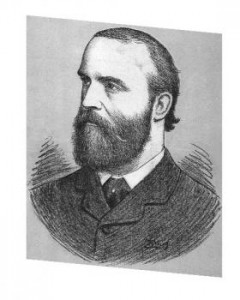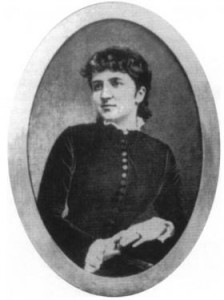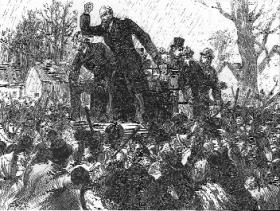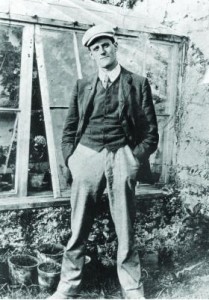Parallel Parnell: Parnell delivers Home Rule in 1904
Published in 20th-century / Contemporary History, Features, Home Rule, Issue 3 (May/June 2010), Parnell & his Party, Volume 18
‘Parallel’ Parnells (United Ireland supplement, 10 October 1891)
Throughout the 1880s Parnell was renowned as Ireland’s ‘uncrowned king’, while his personal life was dominated by his furtive relationship with the attractive wife of a parliamentary colleague, Captain Willie O’Shea. When Parnell was cited in the O’Shea divorce case in November 1890, his political world fell apart and Irish nationalism was plunged into turmoil from which it took a generation to recover.
Constructive Parnellism
There are those who argue that Parnell’s political star had already peaked by 1890. In his desire to be close to Mrs O’Shea, Parnell spent much time in England during the 1880s and this inevitably distanced him from his political base.
When we look at his record throughout the 1870s and 1880s, it seems quite probable that, had he lived into the twentieth century, Parnell would have remained a dominant force in Irish politics. This was the case with Daniel O’Connell and Éamon de Valera, both of whom retained their popular mystique to the end of their lives. Had he survived, it is unlikely that Parnell could have prevented the failure of the second Home Rule Bill in 1893. An Irish Party with Parnell at the helm would, however, have remained a formidable force throughout the 1890s. He might have adopted a more radical stance, coupling parliamentary agitation with direct, popular action on some issue capable of galvanising the Irish electorate. For example, the idea that Ireland was being taxed too heavily inspired an unusual degree of political consensus across the nationalist/unionist divide in the second half of the 1890s. This issue could well have supplied Parnell with a platform for a rejuvenated push to extract political concessions from the British government.

Mrs Katherine O’Shea—what if Parnell had not met and started a relationship with her?
Debilitating divisions between Parnellites and anti-Parnellites (graphically illustrated in the last issue of HI for County Meath) weakened the Irish impact on British politics and resulted in the 1890s being a lost decade for political nationalism. It was Parnell’s former lieutenant, William O’Brien, who helped revive parliamentary nationalism at the turn of the century when, through the United Irish League, he helped engineer the reunification of the Irish Party in 1900.
What might a Parnell-led Irish Party have achieved during the two decades after 1890? One thing is certain: Parnell possessed a first-class political talent of a kind that none of his successors could match. He had the capacity to spellbind the Irish public and the skills to navigate the shoals of parliamentary politics. The early twentieth-century Irish journalist and historian Michael MacDonagh contrasted him with his successors. Redmond, he argued, lost momentum ‘for want of that swiftness of decision and iron purpose by which Parnell impressed himself on the imagination of his countrymen and on the fears of their oppressors’.
After 1895, it seems probable that Parnell would have sought to convince the Tory administration of the inevitability of some form of self-government for Ireland. Parnell was no stranger to the idea of working with the Conservatives. In the mid-1880s he had orchestrated a brief Irish Party flirtation with the Conservative Party.
Home Rule achieved in the early twentieth century?
With Parnell still at the helm, could the Boer War of 1899–1902 have provided the catalyst for extracting concessions from the Salisbury government? Parnell would certainly have sought to exploit Britain’s hour of need in Africa in order to drive forward the nationalist cause.

Parnell making a speech in the course of the North Kilkenny by-election of December 1890, the first of three he was to lose. Relieved of the strains surrounding his fall from grace, his untimely death nine months later might have been delayed. (Illustrated London News, 27 December 1890)
Perhaps, however, the best opening for an ageing Parnell would have arisen in 1904. George Wyndham came to Ireland in 1900 as chief secretary with a real enthusiasm for reform. This manifested itself in the Land Act of 1903 which, by facilitating transfer of ownership from landlords to farmers, set in train a resolution of the land question that had vexed Irish public life for two generations. Buoyed by this legislative success, Wyndham’s most senior adviser, Anthony MacDonnell, worked with liberal-minded landlord representatives to produce a modest devolution scheme. This prompted a unionist outcry (the so-called ‘devolution crisis’) and met with a divided reaction from nationalists.
William O’Brien argued that a weakened Tory party might have been willing to do a deal with Irish nationalists in 1904 and bemoaned the fact that what he called the ‘spirit of conciliation’ had been thrust aside. Although an energetic politician, O’Brien lacked the political clout to deliver Irish Party support for proposals that fell short of full-blown Home Rule. A politically mature Parnell would have been better placed to fashion a devolution scheme capable of being accepted by nationalist Ireland. Unionist resistance to any form of Home Rule would, of course, have remained a serious obstacle. The devolution crisis of 1904 brought about the establishment of the Ulster Unionist Council, which remained a key political body throughout the century that followed.
How would Ireland have developed had Home Rule become a reality in the early twentieth century? On balance, I am inclined to conclude that the weight of history would have produced demands for a greater measure of independence even if Home Rule had been granted during the century’s opening years. It is hard to believe that a Home Rule Ireland, even with Parnell in charge, would have remained untouched by the international upheavals of the first quarter of the twentieth century. The Great War turned Europe upside down, dismembering empires and creating a host of new states from their shards. It seems very likely that Irish politics would have been shaken up after 1914. Remember that a Home Rule administration in Dublin would have been obliged to bear its share of responsibility for the carnage on the Western Front, and might have felt obliged to introduce military conscription.
As the head of a devolved Dublin administration, Parnell would probably have sought to take full advantage of the wartime emergency in order to extend the scope of Irish freedom. De facto independence would most likely have come about in the wake of the Great War, as it did for so many Continental nations. In other words, Ireland with Parnell in the driving seat would conceivably have reached the same terminus, but by a different route.
No ‘stir of thought’?

James Joyce—without the events of 1890, we would have been deprived of one of his finest short stories, ‘Ivy day at the Committee Room’, set on the anniversary of Parnell’s death, and of one of the most memorable scenes in A Portrait of the Artist as a Young Man, when ‘Dante’ Conway creates a rumpus at the Christmas dinner table by condemning Parnell and siding with the Catholic bishops. (National Library of Ireland)
It is interesting to speculate about other consequences of Parnell’s continued political domination during the 1890s and 1900s. W.B. Yeats has given us the most memorable interpretation of the implications of Parnell’s fall:
‘The modern literature of Ireland, and indeed all that stir of thought which prepared for the Anglo-Irish War, began when Parnell fell from power in 1891. A disillusioned and embittered Ireland turned away from parliamentary politics; an event was conceived and the race began, as I think, to be troubled by that event’s long gestation.’
Yeats’s contention that Parnell’s eclipse caused a cultural flowering that seeded the Irish revolution of 1916–22 has been disputed. The two decades after 1890 witnessed the emergence of an Irish national literature in English, the founding of the Abbey Theatre, the establishment of the Gaelic League and the consolidation of the Gaelic Athletic Association. The post-Parnell era was also the time when Arthur Griffith developed his Sinn Féin philosophy. It is reasonable to wonder whether these things would have happened in an early twentieth-century Ireland dominated by Parnell?
While we cannot attribute the events of 1916–22 to anything other than an interaction of forces and circumstances, it is clear that Yeats’s ‘stir of thought’ contributed hugely to the character of today’s Ireland. Had Parnell secured Home Rule in the opening years of the twentieth century, this would have been done without the influence of the Gaelic League, the GAA or the emotional nationalism of Yeats’s Kathleen ni Houlihan.
Modern Ireland would surely be a different place without ‘the Irishing of Ireland’ that occurred after the fall of Parnell. Would the leaders of a Home Rule Ireland have sought to promote the revival of the Irish language? With its political motive removed, would the GAA have become such a defining element of modern Irish identity? It is possible that an ageing Parnell might, like Daniel O’Connell when confronted by Young Ireland in the 1840s, have come to be derided as a political dinosaur by an emerging early twentieth-century generation eager for change.
Irish literature would certainly have been dented by the absence of Parnell’s towering image as hero/martyr. The two greatest modern Irish writers,
Yeats and Joyce, both derived inspiration from Parnell’s story. ‘Come gather round me Parnellites’, which appears in Yeats’s Last Poems (1936–9), published more than 40 years after Parnell’s death, underlines Yeats’s abiding fascination with Parnell. Yeats’s words have helped to preserve Parnell’s mythic image as a victim of disloyalty and a martyr for love.
The Bishops and the Party
That tragic story made . . .
And Parnell loved his country
And Parnell loved the lass.
As late as 1930, James Joyce contributed to a fund for a memorial to Parnell, whom Joyce’s father deeply admired. Parnell’s memory is at the heart of one of Joyce’s finest short stories, ‘Ivy day at the Committee Room’, set on the anniversary of Parnell’s death. Without the events of 1890, we would have been deprived of one of the most memorable scenes in A Portrait of the Artist as a Young Man, when ‘Dante’ Conway creates a rumpus at the Christmas dinner table by condemning Parnell and siding with the Catholic bishops.
Parnell after 1890
Ultimately, all hypotheses run aground on the complexity of unfolding events. It is hard enough to detect the true shape of what actually happened in history, let alone what might have been! Parnell’s achievements during a shortened life were considerable. He put together a national movement that came much closer to breaking the Union than any other nineteenth-century effort, parliamentary or separatist. His influence helped to bind disparate elements into a powerful force for political change. One of the two major Westminster parties was persuaded to endorse Ireland’s claims. Its split over Irish Home Rule kept the Liberal Party out of power from 1895 until 1906.
After his death, Parnell became a symbol of Ireland’s political claims. His monument at the end of O’Connell Street—inscribed with the words ‘No man has a right to fix the boundary to the march of a nation’—sets out Parnell’s stall as a nationalist icon. His image survived the whirlwind that transformed Ireland between 1916 and 1922.
The Irish Republic, Dorothy Macardle’s nationalist history of the birth of the Irish state, was cool about Daniel O’Connell but expressed admiration for Parnell, whom she viewed as an advanced nationalist. The circumstances of his fall, with its heady mix of clerical interference and political chicanery, added to Parnell’s appeal for twentieth-century nationalists.
While Charles Stewart Parnell did not survive long enough to fulfil his political ambitions, he did at least achieve the personal fulfilment of marrying, against the odds of political risk and conventional morality, the woman he had referred to as his wife from shortly after he met her in September 1880. It would have been a cruel denouement for Parnell had our exercise in virtual history deprived him of that key part of his personal destiny. HI
Daniel Mulhall lives in Berlin and is an occasional contributor to History Ireland.
Further reading:
R. Cowley (ed.), More What If?: foremost historians imagine what might have been (London, 2003).
R. Kee, The Laurel and the Ivy: the story of Charles Stewart Parnell and Irish nationalism (London, 1994).
F.S.L. Lyons, Charles Stewart Parnell (London, 1977).
















